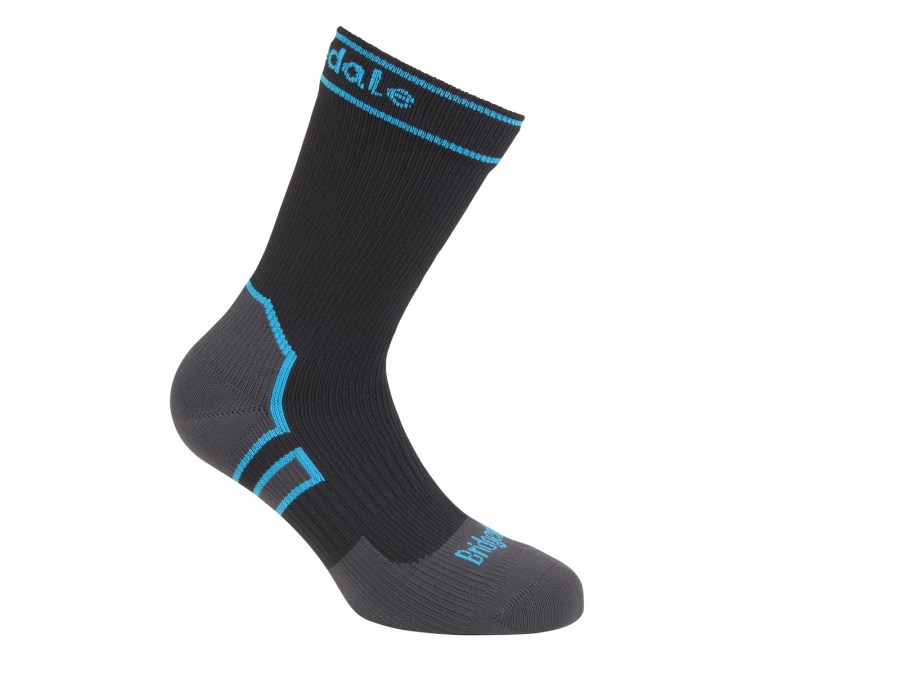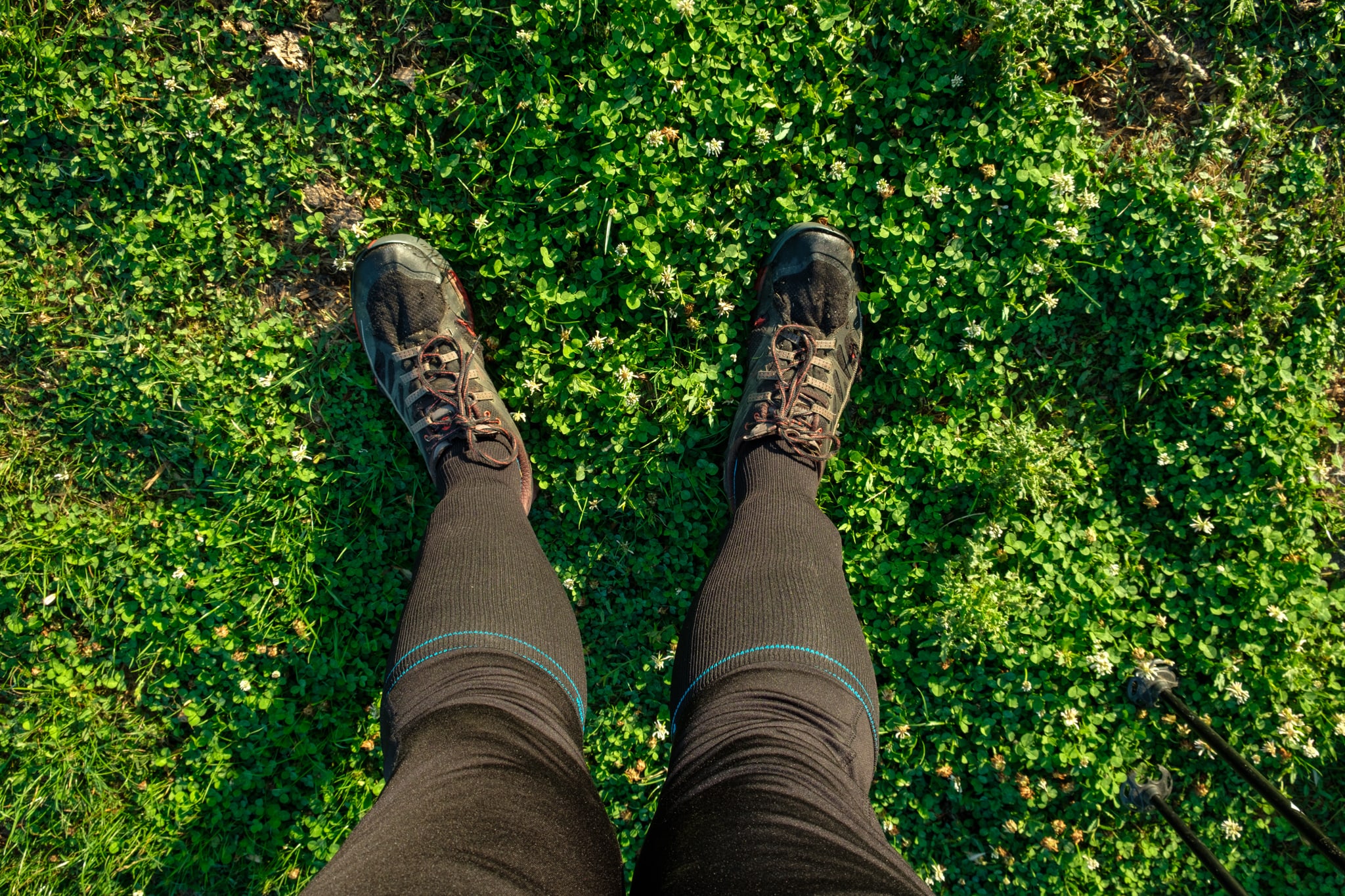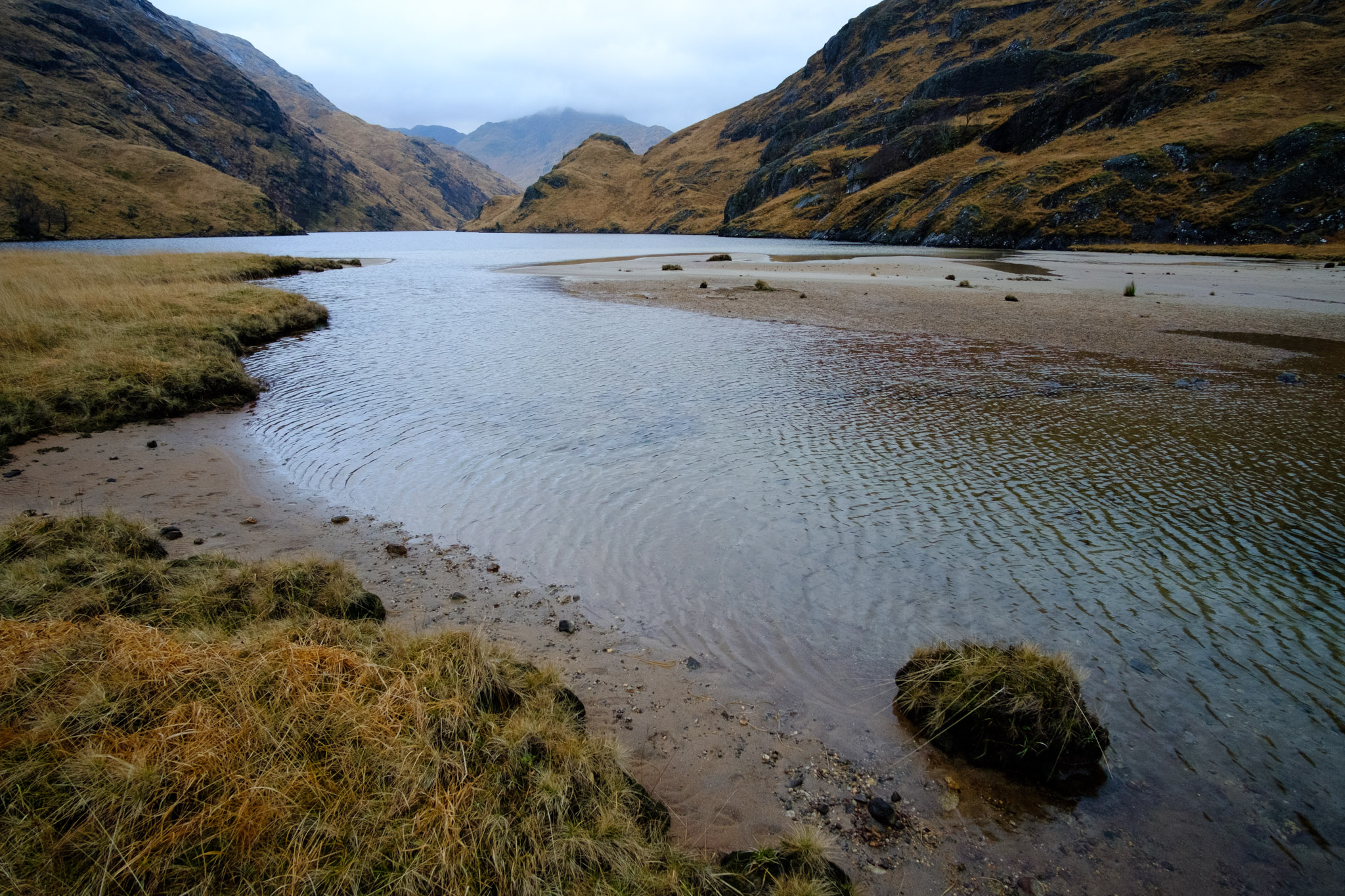Alex Roddie puts Bridgedale’s new Stormsocks through challenging conditions in the Scottish Highlands – so how did they perform after several hundred miles?
I’ve used waterproof socks for some years now, but have a bit of a love/hate relationship with them. They can be great worn inside mesh trail shoes in cold, wet conditions, and I’ve found them useful in winter too. But brands I’ve used in the past never stayed waterproof for long. Abrasion would inevitably cause the waterproof membrane to fail – sometimes after only 20 or 30 miles.
Bridgedale introduced a new range of waterproof socks last spring. The Storm range includes three different weights from light to heavy, and three different lengths from ankle to knee-height. I was sent the midweight knee-height Stormsocks to test.
Although specified as midweight, I’d describe these socks as fairly heavyweight – that’s thanks to the waterproof membrane, which does add slightly to the bulk and stiffness, although not as much as I expected. The footbed and ankle are well cushioned, and the interior lining feels wonderfully comfortable against the skin. The lining is made from 54 per cent merino (anti-bacterial and anti-odour) and wicking synthetic fibres. The nylon outer fabric feels durable too. Stretch is excellent; even though these are calf-length socks, it’s easy to pull them on, and they stay put with no issues.
One downside is that the socks are symmetrical – there is no right sock and left sock. This could affect fit and comfort for some people, but it made no difference for me.
Bridgedale specify breathability by measuring moisture permeability, which they put at >12,000mg/m*m/24h for the HydroTech membrane. The hydrostatic head of the membrane is given as >8,000mm. The key issue in a waterproof sock is durability, of course, because if the membrane is damaged during typical use then the sock is no longer waterproof.
On the hill
Since summer 2018, I’ve tested the Bridgedale Stormsocks rigorously, starting with regular walks in the Lincolnshire countryside and gradually building up from there. From the outset, I was pleasantly surprised by the breathability of these socks. Most waterproof socks I’ve tried before have felt somewhat clammy, but the Stormsocks remained comfortable in a wider variety of conditions. Due to the fact that these are still fundamentally thick, knee-height socks, though, they did start to feel a little too warm when the temperature climbed; I certainly wouldn’t want to use these as my main pair of socks for midsummer hillwalking.
After a trial run backpacking through Knoydart in December, I selected the Bridgedale Stormsocks as a key item of gear for my winter Cape Wrath Trail in February 2019 (read all about this in the upcoming May 2019 issue of The Great Outdoors). I was concerned about the prospect of blisters caused by prolonged wet feet in the likely conditions I’d face over almost 300 miles of trail in the Scottish Highlands, and decided that waterproof socks would be worth the modest weight penalty. In the end, conditions were not as wet or cold as I’d feared, but I still ended up wearing the Stormsocks almost every day. I found them ideal for layering beneath gaiters and waterproof trousers. This combo was waterproof enough to deal with most river crossings. Even in the event that my gaiters and boots were inundated – which happened a few times – my feet were protected from the icy water by the Stormsocks. Water managed to get in at the cuffs during a few of the deeper river crossings, but my feet remained warm even when the socks themselves were flooded.
I even managed to dry the Stormsocks out more easily than anticipated each night by turning them inside out and letting them air in the breeze blowing under my flysheet.
By the standards of waterproof socks I’d used in the past, the Stormsocks were an order of magnitude better. They were more comfortable, and felt more like real socks (I often forgot that they were supposed to be waterproof socks while I was hiking in them!). Breathability in the cool conditions on the trail remained superb, even after hours of hiking through mud and slush, and even if my boots were soaked through. Only when the socks themselves were soaked due to water ingress at the cuffs was breathability compromised.
As for durability, they were surprisingly good but not perfect. After an estimated 220 miles of hard and near-continuous use, the right-hand sock developed a small leak near the heel – just enough to let in a little dampness in the wettest conditions. This was no doubt caused by repeated wear in that spot, possible made worse by grit or debris inside the boot itself. After another 100 miles of use, I noticed no further leaks.
This is great performance, and my pair of Stormsocks provided significantly better durability than waterproof socks from other brands I’ve used in the past.
Who these socks are for
Waterproof socks are a bit niche. For long-distance backpackers, I think they are perfect for chilly spring or autumn routes when you’re wearing lightweight trail-runners and want to keep your feet warm and reasonably dry. They also work well inside big boots on longer, colder walks. In summer, even the lighter-weight Stormsocks are likely to be a bit too warm for most walkers to wear for prolonged periods, but they’re great to carry in your pack just in case you come across a stream crossing and want to keep your feet dry. They’re also good as camp socks to wear inside wet footwear after your day’s walk. Occasional use will help to prolong the life of the waterproof membrane, of course.
Nothing will keep your feet perfectly dry 100 per cent of the time in the worst conditions, but the Stormsocks come much closer to that ideal than competitors thanks to the superior comfort, improved durability, and high levels of breathability.
While this is a strictly impartial and unbiased review, like all reviews from The Great Outdoors, it’s relevant to mention that Bridgedale are sponsoring this year’s TGO Challenge (the 40th). The brand says: “We pride ourselves on producing the most comfortable, highest quality, hardwearing socks in the business, and are market leaders in the innovation of hosiery technology, which means we produce the most comfortable socks on the latest machinery.
“Every single Bridgedale is passed through a series of inspection processes and at the packing stage is hand inspected to reach our very high quality standards. Quality is at the heart of everything we do.”










